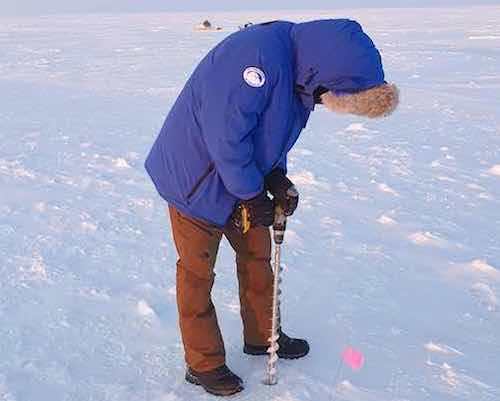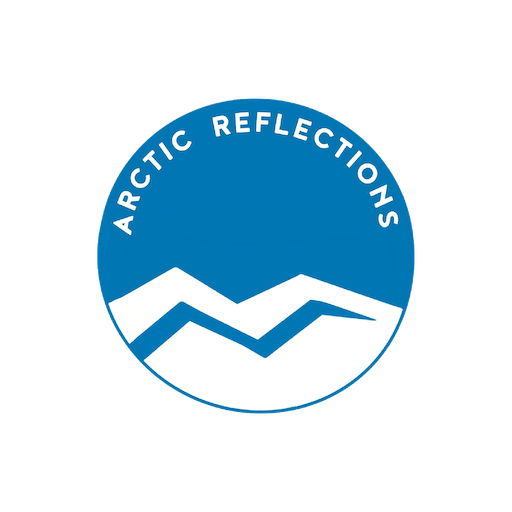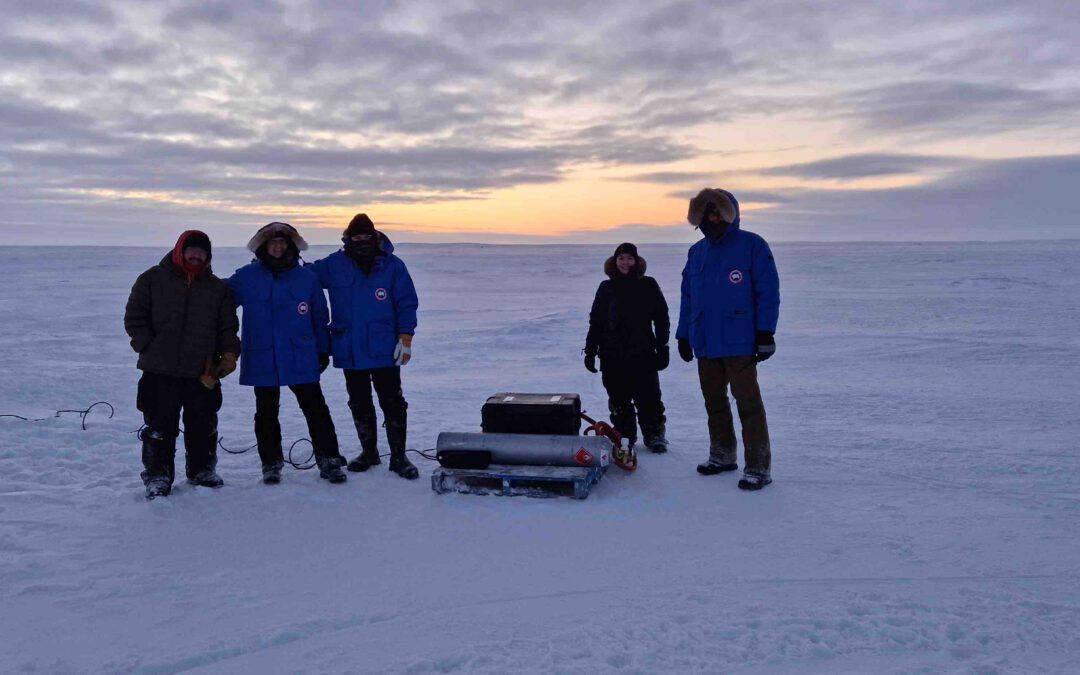Mid-January, it was finally time to go to the Arctic. Fonger accompanied an expedition organized by Real Ice, a UK initiative with a similar mission as Arctic Reflections, and with the Cambridge Center for Climate Repair. This proved to be a valuable trip! The aim to come along was twofold. On the one hand, to gather first-hand operational experience in ice thickening and performing measurements in Arctic conditions, we could take the learnings, observations (and nice pictures!) with us in preparation for our field tests. On the other hand, this trip presented an excellent opportunity to discuss our initiatives with the local Indigenous population and get their valuable input and opinion on our methods of ice preservation, by pumping water from underneath the ice on top of it, to have more ice left in summer.
Arrival
After a long and exhausting trip from Amsterdam, we finally arrived in Cambridge Bay, Nunavut. This is a village with less than 2000 inhabitants, most of which are part of the Indigenous community. We stayed at CHARS, the Canadian High Arctic Research Station, set up in 2017 as a Research Station for researchers from all over the world to study the Arctic. In summer, there are many people here to do research, however, in winter, there are only 2 other teams present.
On arrival, temperatures were in the minus thirties Celsius, which meant that covering skin was essential. Almost every day, the weather forecast warned of “frostbite within minutes”. The daylight was better than expected. Having been warned that the first real sunrise had only been the week before, we had thought days would be mostly dark. However, due to the abundance of whiteness from snow and ice, twilight was pretty light, so effectively between 9:30h and 15:30h, it was not too dark and visibility was quite good.
After settling into our apartment, we met the people from Field Ops at CHARS to discuss our field trips, how they could assist, and the necessary safety precautions. After that, Andrea and I met the people from EHTO, the Hunters & Trappers Organization of Ekalututiak (the Inuit name for Cambridge Bay), who would help us find local guides. Our main guide was Pamela, who happened to be the only female guide in Nunavut. Such an honor!
On the sea ice
The next day would be the first day on the ice. This involved a lot of preparations, especially since the system we would be using was a hydrogen fuel cell-powered pump, which meant we had to comply with regulations for transporting the hydrogen cylinders safely. In the end, the day turned out to be a disappointment. Andrew and Andrea went with the guides on what was supposed to be a first shift, but after a couple of hours, they came back with work unfinished. Conditions had been very cold, and confusion about the exact location meant they took a lot of time traveling on snowmobiles, which added to the cold. This meant that they had only managed to drill a good hole for the pump but couldn’t get the system to work anymore.
The next day however went better. This time, we were out with four people plus two guides, and we managed to get the system up and running. The pump ran for almost 4 hours, and it was interesting to see how the water saturated the snow first and then moved further horizontally. We created a whole area of slush. The snow layer was more than 10cm, so we were a bit worried whether this would freeze, especially since on the outer edges, the water had gone underneath the snow, and not reached the top.
Pumping seawater onto the ice
The next day, most of the slush was frozen, at least the top layer. Underneath, there was still a layer of slush, and later we found out that as expected, this was more salty than the top layer, and also than the original ice. However, when we checked after yet another night of freezing, it had all frozen into solid ice. This is an important and encouraging sign, even with a substantial layer of slush, it will freeze in a matter of days.
Operationally, having our guides with us, who put up a small tent with a little heater, made all the difference. Especially when the wind was blowing, conditions were very tough, and being able to warm up between shifts on the ice was a lifesaver.
It was also interesting to hear the stories about their strong reliance on the ice. For example, they need the presence of ice to travel from Victoria Island to the mainland to go hunting for Caribou or Musk ox. Even in winter, they go for long stretches on a snowmobile to visit the most ideal hunting spots, often staying in small tents on the ice during the night! They had noticed that the ice season was getting shorter. Usually, they would be able to travel to the mainland over the ice by November. This year it had not been possible until December. They stated that if our method would prolong the sea ice in summer, this could be really beneficial to them, which was very encouraging to hear.
Ultimately, we experienced fewer pumping hours than anticipated throughout the week, primarily due to harsh conditions and equipment malfunctions.
Nevertheless, we managed to thicken the ice by 25 centimeters on average, and up to 35 centimeters, over a plot of around 4000m2. The local organization SmartICE will keep measuring thickness throughout the season, so further ice growth and melting can be monitored.
Until next year?
It was a very good week, and we were very well received. The people at CHARS were really helpful, and so were our guides. Also, Real Ice made a great effort to engage with the local community, by organizing a community consultation event in the Elder’s palace and organizing a demonstration on the ice for the local high school. It was such a pleasure to see the kids being engaged and asking smart questions about climate change!
We heard many interesting stories and met some very nice people. It would be great to come back next year for the next phase of our initiative!

Fonger drilling an ice core

